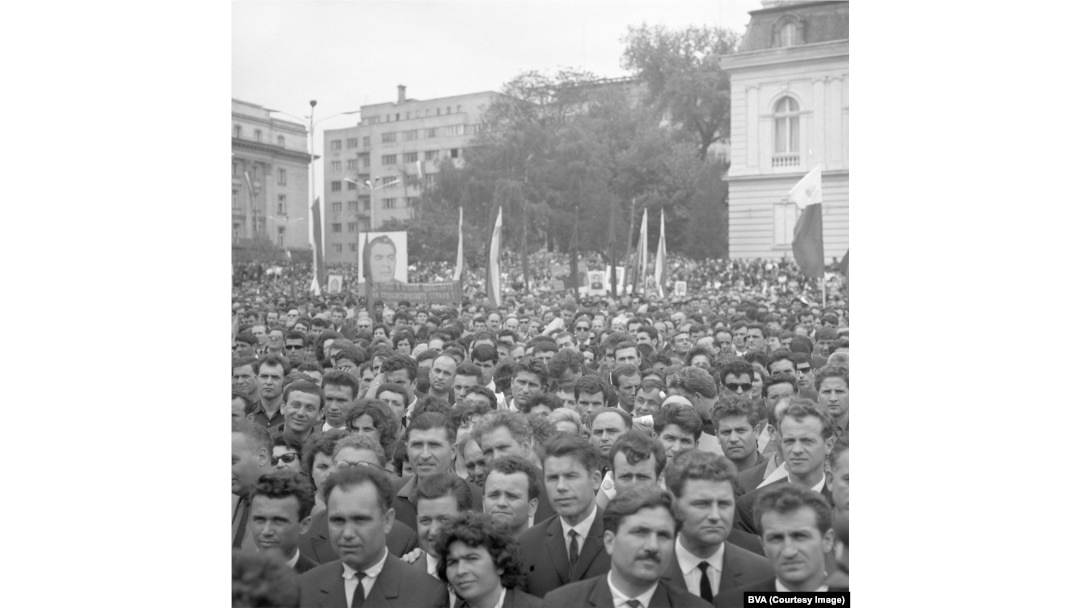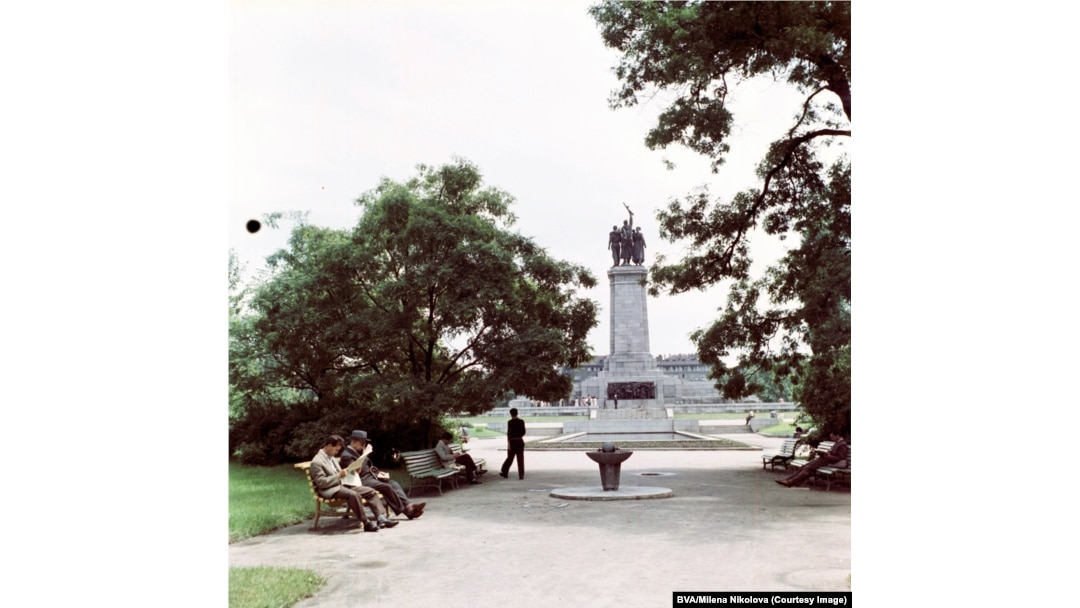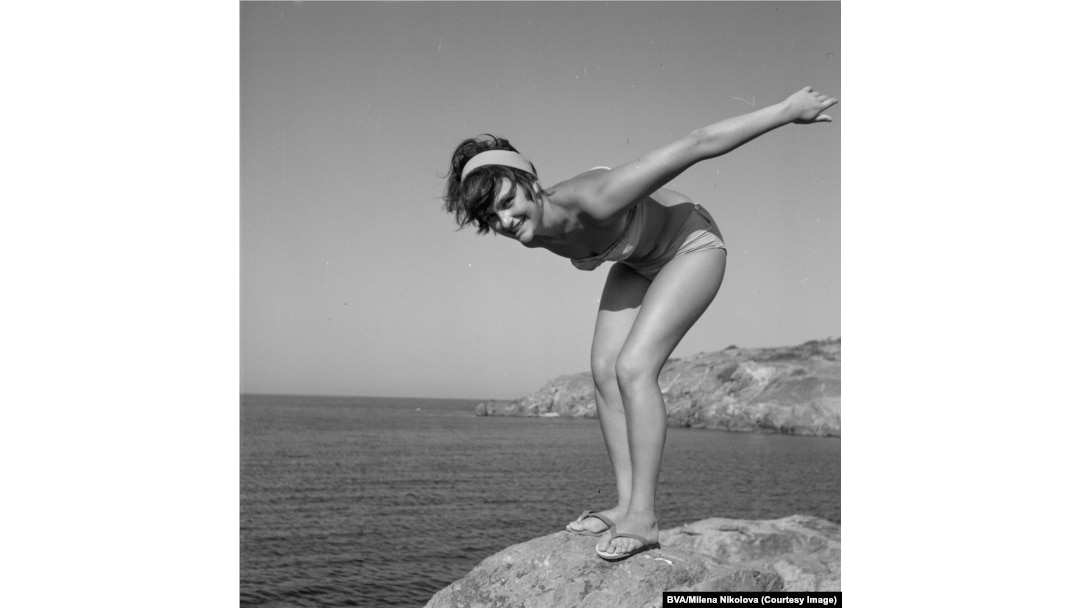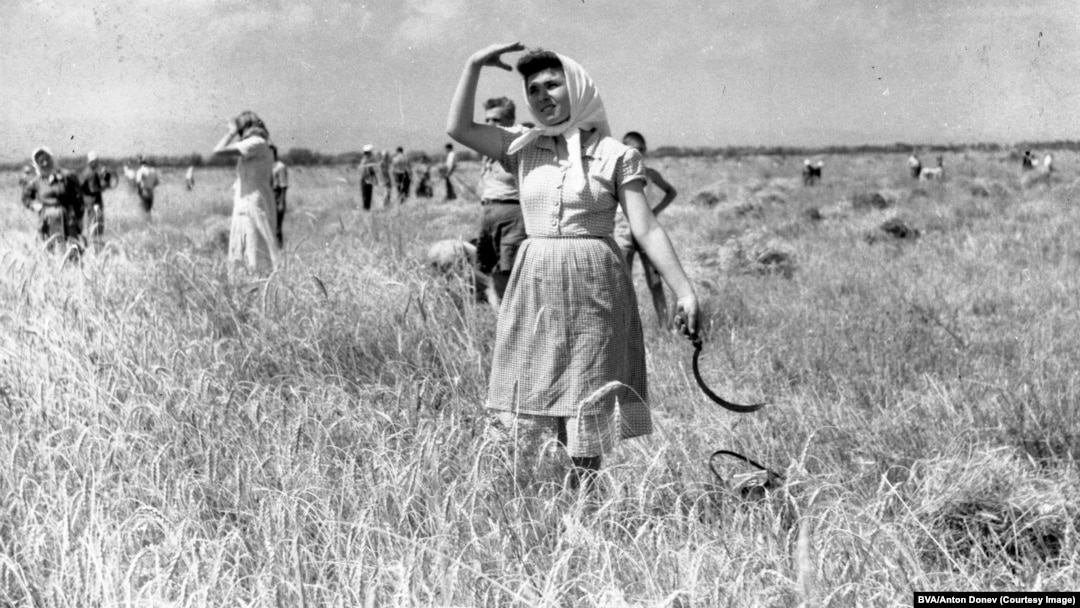From Prague to Podgorica, official photos from Europe's Eastern Bloc during the years of communism tend to look the same.

Crowds in Sofia listen to a speech by Leonid Brezhnev during the Soviet leader's 1967 visit to Bulgaria.
Now, thanks to two visual historians, an online resource called the Bulgarian Visual Archive (BVA) offers an intimate glimpse into what life was like for ordinary people behind Bulgaria's Iron Curtain.

Spring in the park known as the Garden of the Memorial to the Soviet Army in 1961. The Soviet monument in the background was removed in December 2023 after decades of public debate.
Since its launch in 2019, the BVA has amassed a collection of more than 16,000 images from the previous century, with many donated from personal collections.

A woman vacationing on the Black Sea in 1962
The BVA's founders, Tihomir Stoyanov and Johanna Trayanova, told RFE/RL that the inspiration for the archive came as a result of Stoyanov's growing collection of historical photos, and Trayanova seeing an exhibition in 2018 held by Fortepan, an open-access Hungarian archive built with donated photos.
Commuters, including several carrying skis, wait to board buses up to Vitosha mountain in 1974. The Vitosha massif looms above Sofia and is one of the symbols of the Bulgarian capital.
The Fortepan exhibition in Budapest "blew my mind," Trayanova told RFE/RL, and the pair decided to launch their own Bulgarian version of the renowned Hungarian initiative.
Sofia's Hipodruma suburb photographed in 1966
Stoyanov was already known in Sofia's artistic circles for collecting neglected personal photographs for his Imaginary Archive image collection.
A worker in Sofia in 1975
The two friends realized that they could follow the Fortepan model -- making donated photos available online in high resolution and opening the captions up to anyone with verifiable knowledge of what an image portrayed.
A tram winds through the foothills of Vitosha on its way toward central Sofia in 1970. The St. Alexander Nevsky Cathedral can be seen in the upper left background.
The BVA is a way "to make the past accessible for younger generations and keep those stories alive," Trayanova says.
The changing of the guard ceremony in front of the Mausoleum of Georgi Dimitrov in 1974. Dimitrov was the first ruler of communist Bulgaria, from 1946 until his death in 1949. His mausoleum was demolished in 1999.
The BVA covers the entire 20th century, but the rarest images are from Bulgaria's 1946-90 communist era, of which precious little remains outside official propaganda images.
A wet winter scene along Sofia’s Giorgi S. Rakovski Street in 1974. The sign in the upper left is still in place today, advertising the Tears and Laughter Theater.
Stoyanov said in a previous interview that receiving personal photos from the communist period "allowed me to look at the life of the Bulgarian family from up close. I could learn about it straight from the source."
A man reading the Zora (Morning) newspaper in 1970. In the background is a poster of legendary Bulgarian wrestler Dan Kolov (1892-1940).
Informal photos, Stoyanov said are "very important because photography was one of the most powerful tools of propaganda during the socialist regime. It is almost impossible to find something sincere, pure, and not staged in the official archives."
A young Bulgarian couple in 1980
By far the biggest donation the pair have received was from Milena Ivanova, the daughter of professional photographer Panayot Burnev, who passed away in 2016.
A national lottery salesman (left) chats with an ice-cream vendor in Sofia in 1975.
Burnev's street photography "holds a special place in our hearts," Trananova says. "In his free time, he would roam around [Sofia] with his 120-millimeter camera, capturing Sofia in the 1960s and '70s."
A photo by Payonet Burnev of Bulgaria's old National Assembly Building and the statue known as the Monument to the Tsar Liberator, depicting Russia's Emperor Alexander II. The photo was taken in 1965.
Stoyanov and Trananova hope more people will get involved in the BVA project either as donors or by adding insight to thousands of photos that remain without caption information.
An event in Bulgaria in which a festively decorated sheep was apparently tackled. The photo was uploaded to the BVA without a description.
The archive has its own social media pages, but Trayanova says the most vivid reactions to the BVA's photos come at exhibitions.
"That’s when everyone really gets involved," she says. "It’s amazing to see how viewers connect with the photos."
A couple at a seaside cafe on the Black Sea in 1968
"Some people look at the images with nostalgia, remembering their younger days," Trayanova says, "while others are seeing these places for the first time -- places that no longer exist."
A statue of Lenin looking towards Bulgaria's National Assembly (center right) in central Sofia in 1976. The statue was removed in 1991.
Trayanova says the aim for the future of the archive is to hold annual exhibitions like the one she saw in Budapest in 2018.
The pair also hope to build up a community of donors and fans of the archive who can meet, "like a small society, all united by a love for preserving history."


